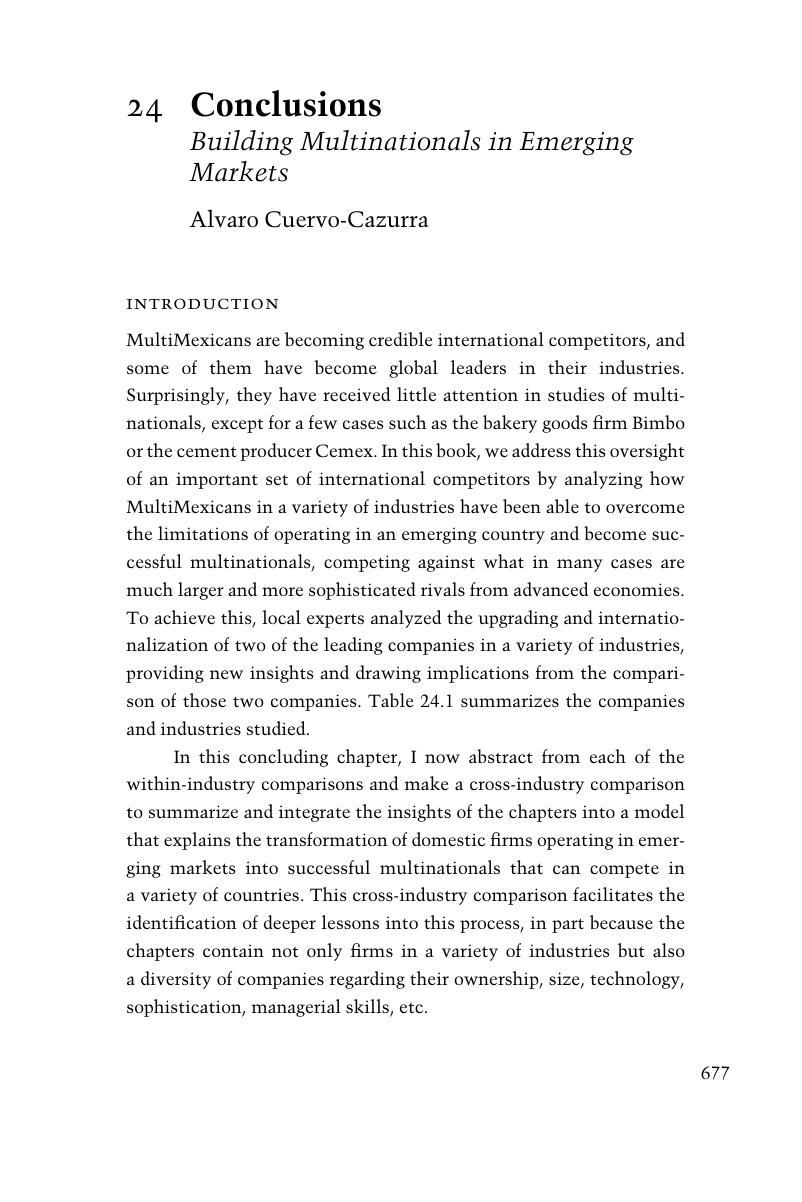Book contents
- Mexican Multinationals
- Mexican Multinationals
- Copyright page
- Dedication
- Contents
- Figures
- Tables
- Contributors
- Preface
- 1 MultiMexicans
- 2 MultiMexicans
- 3 MultiMexicans in the Agriculture Industry
- 4 MultiMexicans in the Mining Industry
- 5 MultiMexicans in the Petroleum Industry
- 6 MultiMexicans in the Iron and Steel Industry
- 7 MultiMexicans in the Food Industry
- 8 From Family Firms to MultiMexicans in the Beer Industry
- 9 MultiMexicans in Footwear
- 10 MultiMexicans in the Cement Industry
- 11 MultiMexicans in the Ceramic Tile Industry
- 12 MultiMexicans in the Containers and Packaging Industry
- 13 MultiMexicans in Automotive Components
- 14 MultiMexicans in the Domestic Appliance Sector
- 15 MultiMexicans in the Retail Industry
- 16 MultiMexicans in the Restaurant Industry
- 17 MultiMexicans in the Hospitality Industry
- 18 MultiMexicans in the Entertainment Industry
- 19 MultiMexicans in the Television Industry
- 20 MultiMexicans in Information Technology
- 21 MultiMexicans in the Telecommunications Industry
- 22 MultiMexicans in Professional Consultancy Services
- 23 MultiMexicans in Higher Education
- 24 Conclusions
- 25 Research Strategy for Analyzing MultiMexicans
- Index
- References
24 - Conclusions
Building Multinationals in Emerging Markets
Published online by Cambridge University Press: 03 December 2018
- Mexican Multinationals
- Mexican Multinationals
- Copyright page
- Dedication
- Contents
- Figures
- Tables
- Contributors
- Preface
- 1 MultiMexicans
- 2 MultiMexicans
- 3 MultiMexicans in the Agriculture Industry
- 4 MultiMexicans in the Mining Industry
- 5 MultiMexicans in the Petroleum Industry
- 6 MultiMexicans in the Iron and Steel Industry
- 7 MultiMexicans in the Food Industry
- 8 From Family Firms to MultiMexicans in the Beer Industry
- 9 MultiMexicans in Footwear
- 10 MultiMexicans in the Cement Industry
- 11 MultiMexicans in the Ceramic Tile Industry
- 12 MultiMexicans in the Containers and Packaging Industry
- 13 MultiMexicans in Automotive Components
- 14 MultiMexicans in the Domestic Appliance Sector
- 15 MultiMexicans in the Retail Industry
- 16 MultiMexicans in the Restaurant Industry
- 17 MultiMexicans in the Hospitality Industry
- 18 MultiMexicans in the Entertainment Industry
- 19 MultiMexicans in the Television Industry
- 20 MultiMexicans in Information Technology
- 21 MultiMexicans in the Telecommunications Industry
- 22 MultiMexicans in Professional Consultancy Services
- 23 MultiMexicans in Higher Education
- 24 Conclusions
- 25 Research Strategy for Analyzing MultiMexicans
- Index
- References
Summary

- Type
- Chapter
- Information
- Mexican MultinationalsBuilding Multinationals in Emerging Markets, pp. 677 - 715Publisher: Cambridge University PressPrint publication year: 2018



